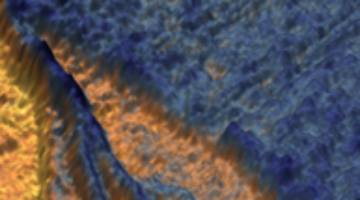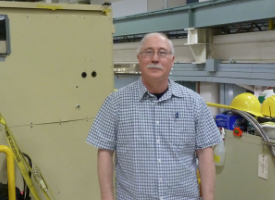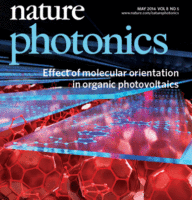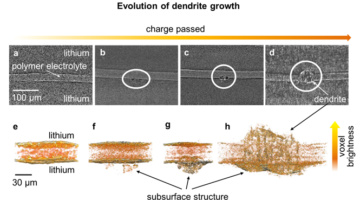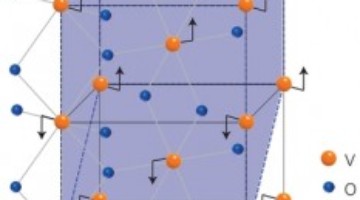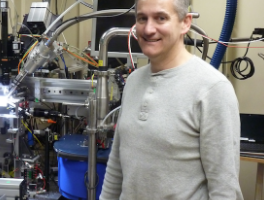A new broadband imaging technique looks inside the mesoscale realm with unprecedented sensitivity and range. Synchrotron Infrared Nano-Spectroscopy (SINS) will enable in-depth study of complex molecular systems, including liquid batteries, living cells, novel electronic materials, and stardust.
Read more »![]()
![]()
Our Youngest Users Win Big at Maker Faire
Over the last couple of months we have been telling the story of Black Pine Circle teacher Chris Mytko (left) and her intrepid group of grade-seven students who came to the ALS to conduct experiments and then recreated their results using 3D printing. Their story continues this month with the happy news that while showingRead More Read more »
Tim Kuneli, Electronics Maintenance Group
The recent ALS power supply failure was one of the most challenging projects that Electronics Engineer Technical Superintendent Tim Kuneli has worked on in his 12 years at the ALS. And judging by how quickly ALS engineering and accelerator physics staff resolved the issue and the ingenuity involved in the fix, it may also be one of the most successful projects he’s been involved in. Read more »
The influence of molecular orientation on organic bulk heterojunction solar cells
Work done on ALS Beamlines 11.0.1.2, 7.3.3, and 5.3.2.2. reveals that preferential orientation of polymer chains with respect to the fullerene domain leads to a high photovoltaic performance. Read more »
ALS Technique Gives Novel View of Lithium Battery Dendrite Growth
Lithium-ion batteries, popular in today’s electronic devices, could gain significant energy density if their graphite anodes were replaced with lithium metal anodes. But there’s a major concern with substituting lithium—when the battery cycles, microscopic fibers of the lithium anodes (“dendrites”) form on the surface of the lithium electrode and spread across the electrolyte until they reach the other electrode, possibly leading to short circuiting. Researchers have recently discovered that the x-ray microtomography capabilities at ALS Beamline 8.3.2 can give them a novel view of dendrite growth that’s likely to provide the insight needed to stop it. Read more »![]()
Ken Goldberg, Deputy Director of the Center for X-Ray Optics
Kenneth Goldberg, deputy director of the Center for X-Ray Optics (CXRO), has been a part of the ALS since 1993, when he began setting up one of the first experiments on the floor, a project in coherent EUV optics. After completing his PhD in physics at Cal in 1997, Goldberg joined CXRO as a staff scientist. Read more »
Peter Nico, UEC Chair
Peter Nico, recently appointed chair of the UEC, brings a varied user perspective to his new post: like many environmental science users, Nico has worked at a number of different ALS beamlines, from hard x-ray tomography to x-ray diffraction to STXM to infrared. It’s the combination of these multiple capabilities that he sees as one of the greatest assets the ALS has to offer users. Read more »
April 1, 2014
Tuesday, April 1 @12 noon in USB 15-253 Direct observation of the indirect to direct band gap transition in epitaxial monolayer MoSe2 filmYi Zhang, ALS, Beamline 10.0.1 Visualizing High-Dimensional DataAnnette Greiner, NERSC Traveling with SoundMarc Allaire, PBD Read more »
IBM Probes Material Capabilities at the ALS
Vanadium dioxide, one of the few known materials that acts like an insulator at low temperatures but like a metal at warmer temperatures, is a somewhat futuristic material that could yield faster and much more energy-efficient electronic devices. Researchers from IBM’s forward-thinking Spintronic Science and Applications Center (SpinAps) recently used the ALS to gain greater insight into vanadium dioxide’s unusual phase transition. Read more »![]()
![]()
Marc Allaire, Beamline Scientist, BCSB
Marc Allaire, the newest member of the Berkeley Center for Structural Biology (BCSB) team, joined the ALS in October as beamline scientist for Sector 5, which consists of Beamlines 5.0.1, 5.0.2, and 5.0.3. Allaire came to the ALS from Brookhaven National Laboratory, where he had been responsible for macromolecular crystallography (MX) beamlines and the biological small-angle x-ray scattering (SAXS) program. Read more »
- « Previous Page
- 1
- …
- 6
- 7
- 8
- 9
- 10
- …
- 17
- Next Page »
